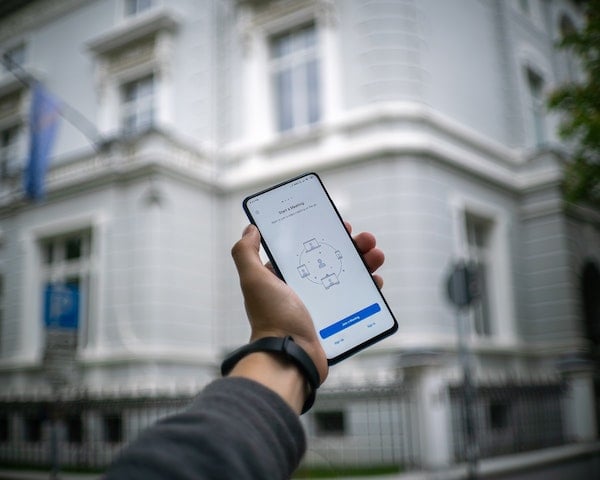Published on
Shifting More Than Just Courses to the Remote Environment

Higher education has never before been in a situation that has left everyone in isolation. It causes stress and anxiety for both faculty and students. The focus can’t solely be on academics; it needs to shift to how institutions can support students who have been blindsided by this new way of learning. In this interview, Kristen Capezza discusses what topic is missing from faculty and leader discussions, how universities can stay competitive in this critical time and lessons learned from the 2008 recession.
The EvoLLLution (Evo): How is the shift to remote working and learning environment going at Adelphi?
Kristen Capezza (KC): It’s been a challenge, but it has been heartwarming to see the community’s response. We started monitoring the entire pandemic back in December–before it officially became a pandemic. We had proactively called together our crisis communications team to start doing some early monitoring and began preparing. So, we likely had more time than some institutions. Over the span of two weeks, we moved over 1,000 classes online, over 1,000 students out of our residence halls, and we shifted our entire workplace to a fully remote work situation. The only critically essential people that remained on campus were health services and public safety.
To mobilize a significant number of people in such a short turnaround time of two weeks was pretty incredible. People worked 24/7 between faculty, information technology units, and our faculty center for excellence. The center supported faculty and taught them the pedagogies of online teaching. Our student life and student support services also shifted online, which is something that people haven’t talked enough about. Student counseling went online to tele-counseling. Our athletics department is offering recreational classes online, where we’ve tried to recreate that community feel. So much attention has been around the curriculum, yet there’s so much extra support needed with mental health and tutoring, and they don’t get attention.
Evo: How important is it to have student support structures in place as a driver of retention and to show support to the learners?
KC: It’s pretty critical. From a retention standpoint, it’s important to let our students know that they’re not in this alone and that we realize that they’ve been thrown into a completely different environment in a short period of time. Anyone who says otherwise is lying. We have to acknowledge that students need different types of support now more than ever. Students who never used counseling in the past may be looking for psychological services now to support them through this period of isolation compounded with dealing with screen time for six to eight hours a day. So, we need to push the message that we’re here for them. Often, many of those services are in the background, but this is a time for us to be more proactive and push them forward.
I lead crisis communications on campus in addition to enrollment, and part of my communications plan is thinking about all of the university’s different audiences and making sure that parents and families are aware of these services. We have about 55 international students who remained on campus, and many of them are anxious about their families who are in countries inundated by the pandemic, like Italy and China, who were dealing with it firsthand. This context creates more need for support.
The other thing I focus on is making sure that we have different types of services for different constituent groups. We have our Center for Psychological Services, Institute for Parenting and our regular mental health counseling center. All of them have responded in different ways. The Institute for Parenting opened up a warm line for parents to call, for students who had questions about childcare and childcare needs related to COVID-19 symptoms. Everyone was offering their specialties related to the current crisis. That’s a really important thing for colleges to think about – serving these different constituent groups in a time like this. One size doesn’t fit all — they each have different priorities.
Evo: What impact do you think the tools that have been adopted as standard practice in remote learning will have on the demand from traditional learners for traditional degree programming?
KC: I don’t think anything will ever fully replace the traditional on-campus experience. There will always be a demand for some element of that. And what we’ve seen now more than ever are people who wanted to work from home or take online classes in the past now talking about how much they miss the live interactions. So, I think nothing will ever replace it, but we’ll likely see models change.
There’ll be more opportunities for collaboration. We saw units come together and use shared services to solve their problems and help students. Through it all, the students’ needs will always be put first. When we talk about what changes are ahead of us, people have found really unique solutions to them through technology. Admissions, for example, shifted the enrollment operation to offer virtual open houses and virtual accepted student days. Students who didn’t have the means to travel and would have otherwise had to rely solely on a flat, static website now have had Zoom conversations one-on-one with our faculty and president.
The same thing is happening in classrooms. They’re using technologies to bring guest speakers from around the world into their classrooms. Before, mentalities would’ve been more restricted geographically to what can be done in immediate proximity of campus. We’ll likely return to campus with the traditional experience but won’t forget some of the creative innovations.
Evo: What do you think will be the new normal?
KC: It’ll be one that incorporates hybridization but still holds traditional values. It underscores the importance of being personalized and having that human-to-human approach. Adelphi has a personalized approach to education. When moving to a remote environment, we had to keep our six objectives in mind every time we made a decision. At the top of that list was maintaining the personalized high-quality academic experience and the supportive environment our students have come to know. They say, “Don’t let a good crisis go to waste; use it to innovate.” And we may innovate, but it’s all done with the principle of maintaining a high-quality academic experience. It doubles down on the importance of good relationships and personalized attention that you give to students. That doesn’t just go away even when you head into a new normal.
Evo: Do you think there’s lessons we can take away as higher ed institutions in terms of how we reacted to 2008 or do you think this is a whole different ball game?
KC: There’s a couple of things. There’s the operational part and then there’s what it means for programming and enrollment in general at institutions. A lesson learned from 2008 is that communication is everything. If you look back and read articles or transcripts from colleges about their experiences in 2008, it was their communication with campuses and constituent groups that got them through much of the crisis.
People crave reassurance during periods of uncertainty, and they’re going to get that from good communication. You need a centralized model of communication that sends out consistent, clear and direct messages that are customized to every audience. Students need to know that when they get a message, they’re kept abreast of the latest information. At the forefront of our minds is figuring out how we communicate information to our community in a way that makes sense. How do we make it relevant to them, while keeping it transparent and accessible?
Creating websites, FAQs, simplifying language and processes and even thinking about policy changes are a part of that. From an operational standpoint, that’s one of the biggest takeaways that carries forward and has held true for now. The other piece of this is the opportunity costs. The opportunity of not going to college drops dramatically, and job opportunities will change drastically. Hiring patterns change, they pause or freeze, promotions are foregone and there might be salary reductions. With job market opportunities dropping, students aren’t getting a degree then going into the workforce and then coming back for a grad program. They’ll likely stay and enroll directly in those grad programs. Different from other crises, COVID-19 has forced everyone into a remote environment whereas other crises may have allowed people to still stay together, just in smaller groups.
Highlighted are a lot of the inequities and skillsets of those who are comfortable using technology versus those who aren’t. This has become the forefront of the conversation, and it’s an opportunity that will propel people into brushing up their skills and becoming more knowledgeable in new areas. There’ll likely be a boost of people enrolling into grad programs. I think a huge flock of people will be trying to brush up on data analytics, public health and emergency management, especially. As we talked with all of our colleagues, we’re realizing these prospective students will want to learn some of the top skills that will keep them marketable and valuable in the workforce.
The difference in 2008 was that a lot of people thought higher ed was insulated from the downturns because people were just going back to school. But schools now will be looking and demanding for more value in their programs, and they need to make sure they’ve got relevant programs in order to be insulated from the downturn.
Evo: How does a university stay competitive to this discerning and potentially critical audience in an environment where their tuition dollars are probably more important than they are at any other period?
KC: It all comes down to the quality of the experiences that schools are providing. We realized that there was this rush in 2008, and there weren’t nearly as many online programs. Some of the big names and leaders started to emerge in this space. But a lot of the smaller, more regional and local schools simply didn’t have these programs. Over time, there has been a small ramp-up on demand for a more flexible schedule. Even adults returning to school demand that courses accommodate their busy, working lives or their families.
When developing these online programs, you start to see that the winners are the ones who are moving forward in delivering a quality experience. It still has those support structures in place but in a way that’s customized online. What we’re going through right now as an industry, it’s not meant to happen. We’re not meant to take the dance or science class and just pop it online. We’re making it work, and we’re doing it well, but schools can’t come out of this and convert programs to fit online right away. We need to be able to get them ready for a completely online format–ensuring that quality, delivery and experience are up to par with what an online program should be.
Schools that’ll survive will be the ones who can take their programs and determine how to pivot them. With any recession or challenge, it’s about how quickly you can adapt and pivot and do so with quality. You can’t just say that you’re going to do it — you have to do it with quality. That’ll be the make-or-break of most institutions.
Evo: How do you scale the personalization and quality aspect of the mission to ensure you’re still delivering on the promise of the institution while creating access pathways?
KC: It comes down to operational efficiency within the university– trying to find the economies of scale and figuring out where to put resources and how to reallocate them. Many universities have individual services in each of their colleges and units, so they need to create a shared services model and then reallocate some of those resources to ensure quality components, pathways and access.
Most institutions won’t go back to doing business as they’ve always done. Many will take some of their discoveries and find ways to create efficiencies within their workforce and the resources they’re providing. They’ll research their student body to figure out where else they can serve their students better. People should be collecting feedback and trying to take some of the ensuing insights to create opportunities to pivot.
For us, we found early on that we needed to boost our loaner. We serve a fairly diverse population and a fairly diverse socioeconomic population at that. Not everyone had access to the proper technology to tackle remote learning, so we quickly worked to provide everyone with laptops and the Internet access that they needed. If you look at some of those takeaways, they show the inequities in your campuses, and you need to think about moving forward if you’re going to create these pathways and ensure quality for all students. Make sure you’re thinking about all of those equity components and how you do those economies of scale to put resources where they’re most needed.
This interview was edited for length and clarity.
Editor’s note: This interview was recorded on April 16, 2020.
Author Perspective: Administrator


